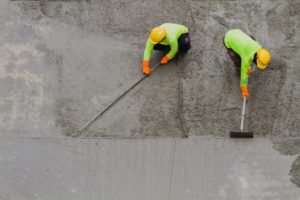For motorists, there’s no greater pleasure than driving in a brand-new car. Of course, we all can’t drive a new car every single day unless you’re flush with cash. The next best thing is to have your car cleaned, and I’m not talking about the kind you get from an automatic car wash. Automatic car washes might be convenient, but the jets and brushes aren’t that effective in removing the debris hidden in the nooks and crannies of your vehicle.
The best kind of cleaning is a DIY car wash. There’s nothing like spending an afternoon with a garden hose and a bucket to clean every inch of your vehicle. However, a DIY car wash can cause more harm than good if you don’t know what you’re doing. If you think new Subaru brakes cost an arm and a leg, wait until you damage your car’s finish. There’s a lot more to a car wash than many car owners realize.
With some planning and preparation, you can make your car look like it just rolled off the showroom. Here are a few tips and tricks you can use to clean your car the right way.
1. Inspect the vehicle
Before anything else, you need to check the condition of your vehicle. Before you can clean your car, you need to determine how dirty it is. That way, you’ll know the extent of the cleaning job and the materials you’re going to need. Is your car covered in soot? Are the wheels caked in mud?
For instance, you’ll need to wash your car after driving on icy roadways. The salt could corrode the metal if left on the vehicle’s body for a long time. If all your car needs is a quick wash, then you don’t have to haul out all your cleaning supplies. But if your car hasn’t been cleaned in a while, then you’ll probably need your wax and polish.
2. Read the product labels
You wouldn’t eat or drink anything without asking what it is first, and the same goes for your vehicle. Make sure to read the product labels before using it on your car. For starters, you need to make sure that the cleaning product won’t damage anything it comes into contact with. Not all cleaning products are multipurpose, and using the wrong product can cause permanent damage to the coat or paint.
If you’re not sure about which product to use, always go for the mildest option. You can also ask for product recommendations from an auto mechanic. They work with a wide array of vehicles and should know which products work with which model. Reading the label can save you a lot of money down the line.
3. Don’t reuse water

If you’re working with only one bucket, then you’re doing it wrong. A proper car wash should remove all dirt and grime from the surface of the vehicle. Reusing dirty water only puts the dirt back on your vehicle. Make sure to use at least three different buckets when washing your car.
The system is straightforward. You add clean water to one bucket and cleaning product with water into the remaining buckets. Reserve one bucket with cleaning product and water for your vehicle while the other one is just for your wheels. Use the water bucket to clean your sponge or wash mitt before dunking it again in the cleansing bucket.
4. Wash the wheels first
You need to follow a proper order when washing your car, and it makes sense to tackle the most difficult job first: the wheels. It’s often the dirtiest part of the vehicle, and cleaning it first will save you from headaches down the line. You’re only going to need one bucket to clean the wheels, so put the other two buckets in a corner to prevent cross-contamination.
For starters, make sure to thoroughly hose the tires down to remove all traces of cleaning products once you’re done. Otherwise, your tires could spray the residue on the car’s paint. It’s also smart to skip the tire dressing: it could affect the tires’ grip and make it difficult for you to maneuver the vehicle.
A final word
These pointers will help you clean your vehicle more productively. Start by inspecting the vehicle, so you can check how much work is required. Reading the cleaning product’s label before use will also help prevent permanent damage. Use multiple buckets to prevent cross-contamination. And finally, clean the dirtiest part of the vehicle first.














